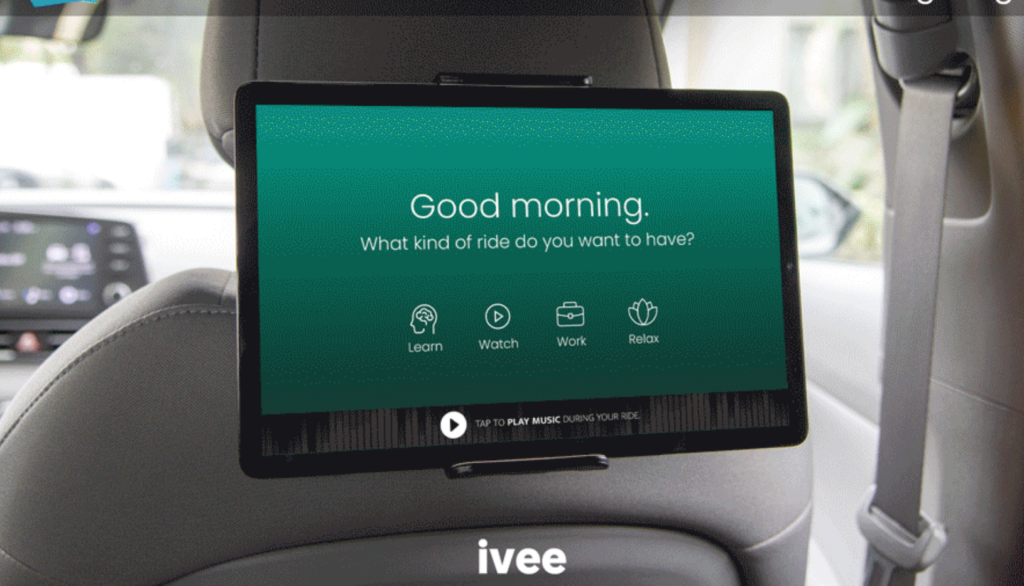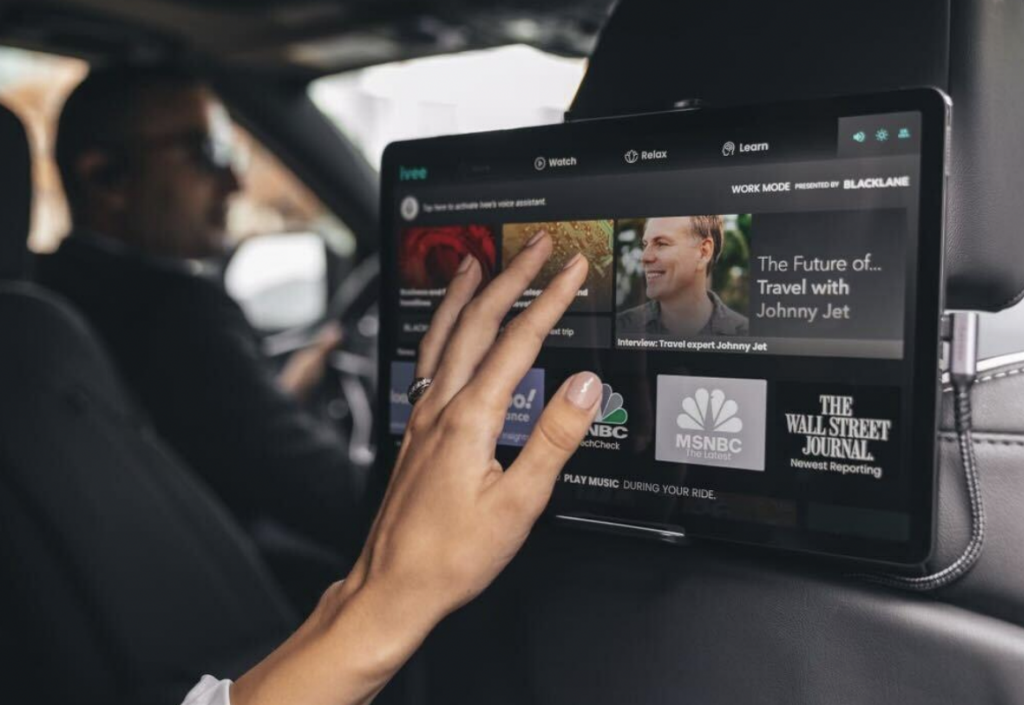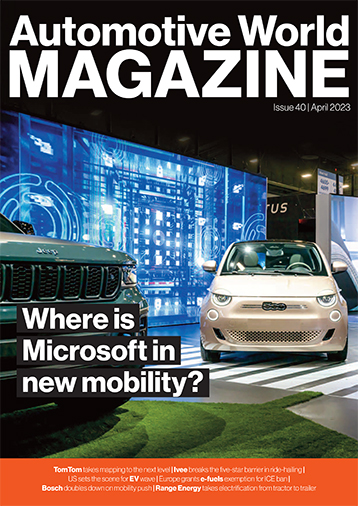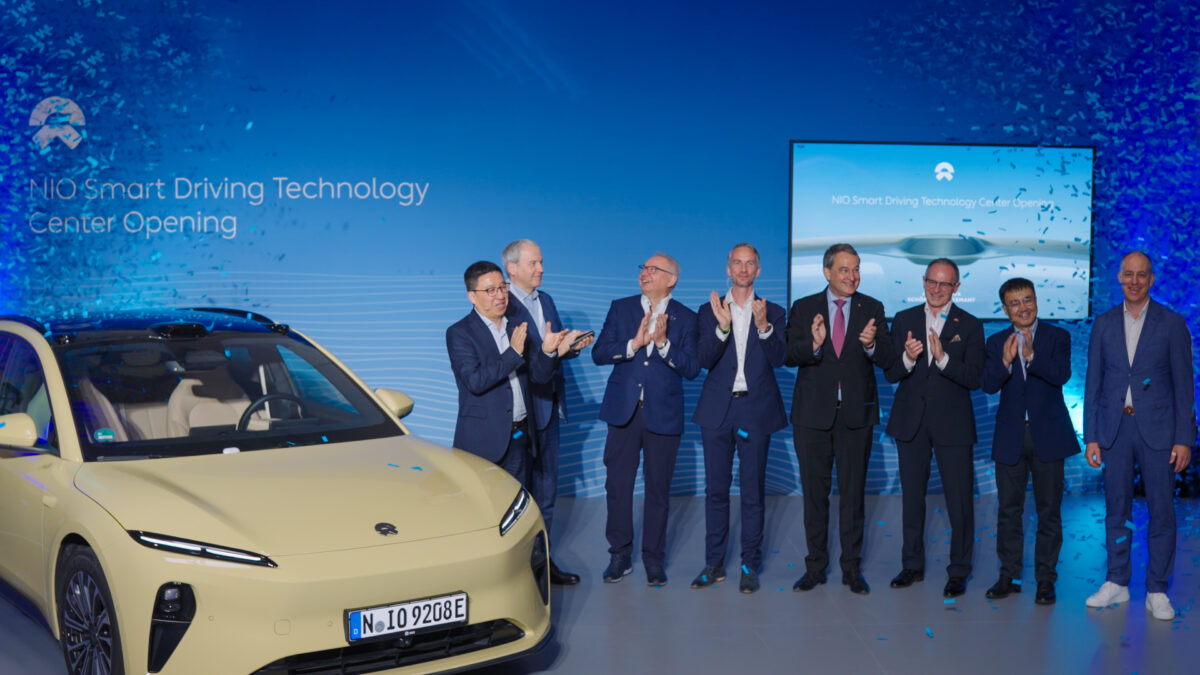Individual sound bubbles, mood-based lighting and haptic feedback—it doesn’t sound like your average ride-hailing experience, but that’s changing. The shared mobility industry is poised for notable growth in the coming years. McKinsey projects that spending on all forms of shared mobility globally could reach between US$500bn and US$1tr by 2030, which would be four to eight times the 2019 level. Investing in the next level of user experience could provide a huge return on investment for service operators.
Choose your own adventure
Mobility software specialist Ivee (In-Vehicle Experience Enhanced) and automotive interior supplier Toyota Boshoku showed off their vision of a new sensory experience for ride-hailing passengers at CES 2023. It’s all about personal preference, with numerous options available through a touchscreen. “Many people will spend an hour every day in transit,” notes Ivee Chief Executive Alex Giannikoulis. “What do they do with that hour? Our answer to that question is that they’re going to choose their own adventure. Our mission is to help them make the most of their time on the go.”
The setup closely resembles an online version of the infotainment systems offered on long-haul commercial airline flights. As soon as they sit down, passengers can adjust their desired settings and select if they want to watch a film or listen to music. An office setting provides privacy-enabled video conference calling for those that remain in work mode. Riders that are tired or stressed after a long day may go for the spa-like experience offering a guided meditation audio (which comes out of speakers in the headrest) supported by ambient lighting. Then there’s a theatre-like experience recreating the sounds of a cinema while vibrating seats accompany high-intensity scenes or explosions.
“Not only will you see and hear your content, you’ll also feel your content,” emphasises Giannikoulis. “This creates an immersive environment.”
The next level
Backseat infotainment offerings are not new in themselves but they usually come factory-fitted from automakers. Ivee has been offering an aftermarket passenger infotainment system for ride-share vehicles—centred around an Android-powered tablet attached to the seat in front—for four years in the form of Ivee Inside. It is now stepping things up with the Immersive experience outlined above, adding in advanced seating, lighting and haptic feedback sensors. Teams from Ivee and Toyota Boshoku have been developing Ivee Immersive for just over a year. This too will be sold as an aftermarket option for existing vehicles running in ride-hail operations or similar fleets, with the promise of an easy installation. “If you’re a fleet that owns a bunch of Corollas, you don’t want to have to upgrade to an US$80,000 Lincoln,” he notes. “You can just buy a cheaper upfit and it feels like a more unique experience.”

The company aims to roll out Ivee Immersive in Q2 2023 with one confirmed launch partner. Giannikoulis is hopeful of securing two more by the end of the year.
The payback on the initial investment could be significant. The company estimates that the Ivee experience will improve customer satisfaction and loyalty to a specific operator. In financial terms, that could result in an increase of earnings per vehicle of about 20%. “These operators are seeing something like 3% margins,” notes Giannikoulis. “Moving steel across town—especially empty—is very expensive. Anything that can add value will be a help to them.”
Future mobility
Ivee estimates that 82 billion minutes are spent every year in ride-hailing vehicles. In a future of driverless vehicles, that could be just the tip of the iceberg. In such an environment, user experience may prove to be central means of brand differentiation. “You either compete on price—fast and cheap—or quality,” Giannikoulis tells Automotive World. “The experience layer is what’s going to differentiate.”

But achieving that vision is taking longer than many players originally expected. “People are realising that the developers are not getting to self-driving as planned, so the focus is turning to what can we do now,” he notes. For Ivee, there is plenty of room for further advancement in the meantime. The company is currently exploring greater levels of personalisation and intelligence, such as ways for the user profile to move with the rider from car to car. That means the film they only watched halfway through yesterday could resume exactly where they left off when they get in a new ride today.
It is also gathering data on users to build a more accurate profile of them. This include what settings they start when they first get in, whether they change them later in the journey, and so on. “It will become more intelligent and more predictive to help with the journey and provide a better experience,” he emphasises.
The overall aim is to set a new standard for customer experience. “Why does a ride-hail environment or a ride have to naturally stop at a five-star experience?” asks Giannikoulis. “That’s an artificial ceiling. The layers of experience can increase, and they will. Six-star, seven-star, eight-star—what does that look like? We are starting to design that with Ivee Immersive and it just continues to grow.”




